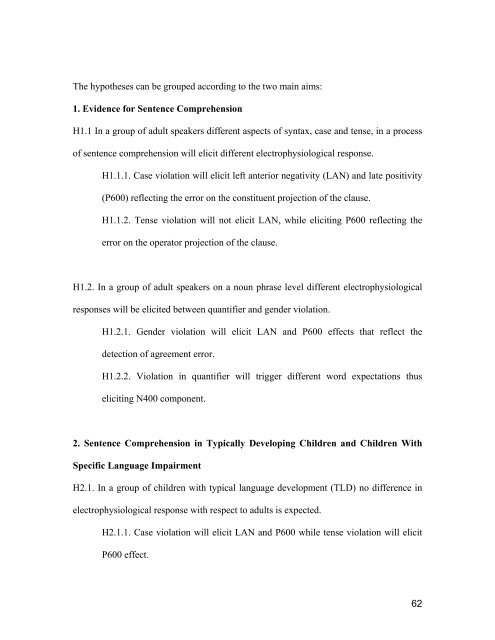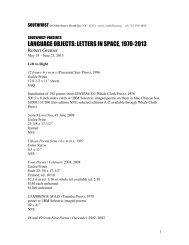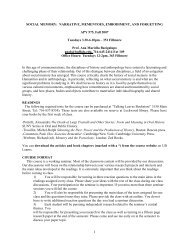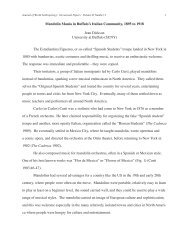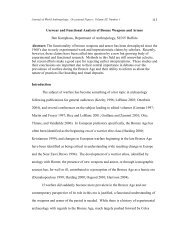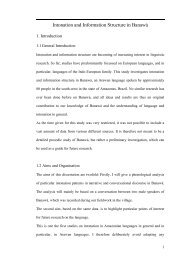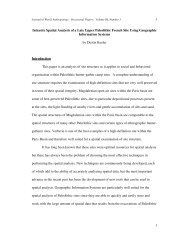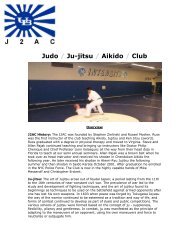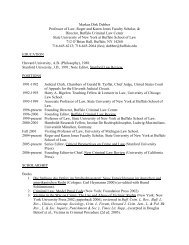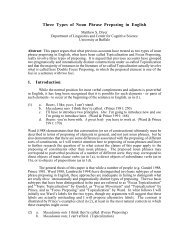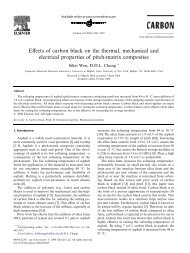Electrophysiological Evidence for Sentence Comprehension - Wings
Electrophysiological Evidence for Sentence Comprehension - Wings
Electrophysiological Evidence for Sentence Comprehension - Wings
Create successful ePaper yourself
Turn your PDF publications into a flip-book with our unique Google optimized e-Paper software.
The hypotheses can be grouped according to the two main aims:<br />
1. <strong>Evidence</strong> <strong>for</strong> <strong>Sentence</strong> <strong>Comprehension</strong><br />
H1.1 In a group of adult speakers different aspects of syntax, case and tense, in a process<br />
of sentence comprehension will elicit different electrophysiological response.<br />
H1.1.1. Case violation will elicit left anterior negativity (LAN) and late positivity<br />
(P600) reflecting the error on the constituent projection of the clause.<br />
H1.1.2. Tense violation will not elicit LAN, while eliciting P600 reflecting the<br />
error on the operator projection of the clause.<br />
H1.2. In a group of adult speakers on a noun phrase level different electrophysiological<br />
responses will be elicited between quantifier and gender violation.<br />
H1.2.1. Gender violation will elicit LAN and P600 effects that reflect the<br />
detection of agreement error.<br />
H1.2.2. Violation in quantifier will trigger different word expectations thus<br />
eliciting N400 component.<br />
2. <strong>Sentence</strong> <strong>Comprehension</strong> in Typically Developing Children and Children With<br />
Specific Language Impairment<br />
H2.1. In a group of children with typical language development (TLD) no difference in<br />
electrophysiological response with respect to adults is expected.<br />
H2.1.1. Case violation will elicit LAN and P600 while tense violation will elicit<br />
P600 effect.<br />
62


